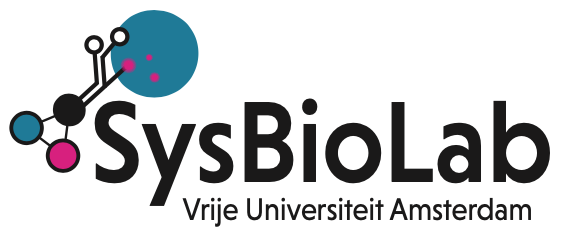A key question in microbial ecology is what the driving forces behind the persistence of large biodiversity in natural environments are. We studied a microbial community with more than 100 different types of species which evolved in a 15-years old bioreactor with benzene as the main carbon and energy source and nitrate as the electron acceptor. Using genome-centric metagenomics plus metatranscriptomics, we demonstrate that most of the community members likely feed on metabolic left-overs or on necromass while only a few of them, from families Rhodocyclaceae and Peptococcaceae, are candidates to degrade benzene. We verify with an additional succession experiment using metabolomics and metabarcoding that these few community members are the actual drivers of benzene degradation. As such, we hypothesize that high species richness is maintained and the complexity of a natural com- munity is stabilized in a controlled environment by the interdependencies between the few benzene degraders and the rest of the community members, ultimately resulting in a food web with different trophic levels.
Lab news
- Summer school “Economic Principles in Cell Biology”
- How genetic circuits can optimally tune metabolic protein concentrations
- Our take on the practical aspects of genome-scale modeling
- Our research featured in Quanta Magazine
- Herwig to lead €5M NWO Perspective Grant Consortium for plant-based fermentations
Recent Posts
- Summer school “Economic Principles in Cell Biology”
- How genetic circuits can optimally tune metabolic protein concentrations
- Our take on the practical aspects of genome-scale modeling
- Our research featured in Quanta Magazine
- Herwig to lead €5M NWO Perspective Grant Consortium for plant-based fermentations
Archives
- July 2024
- April 2024
- February 2024
- January 2024
- November 2023
- September 2023
- August 2023
- July 2023
- June 2023
- May 2023
- April 2023
- March 2023
- February 2023
- December 2022
- November 2022
- May 2022
- April 2022
- March 2022
- February 2022
- September 2021
- May 2021
- April 2021
- December 2020
- October 2020
- September 2020
- May 2020
- February 2020
- December 2019
- November 2019
- September 2019
- August 2019
- July 2019
- June 2019
- May 2019
- April 2019
- February 2019
- November 2018
- October 2018
- June 2018
- May 2018
- March 2018
- February 2018
- January 2018
- November 2017
- October 2017
- August 2017
- July 2017
- June 2017
- May 2017
- April 2017
- March 2017
- January 2017
- December 2016
- September 2016
- August 2016
- July 2016
- June 2016
- May 2016
- April 2016
- March 2016
- February 2016
- January 2016
- December 2015
- November 2015
- September 2015
- July 2015
- April 2015

Recent Comments